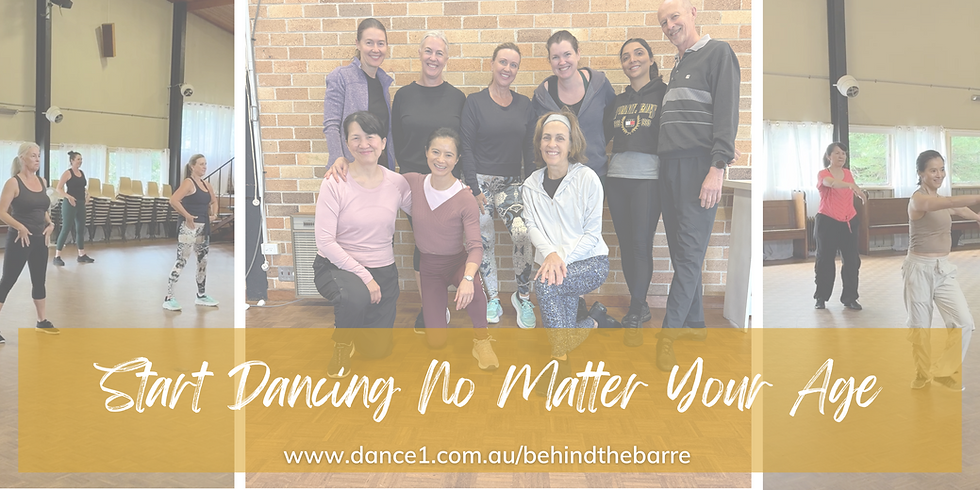Your 'Cheat Sheet' for At-Home Dance Practice
- luisa363
- May 9, 2023
- 4 min read
Just as a budding pianist needs to practice their scales, budding ballerinas need their weekly practice!
Why practise?
Practising at home has a number of benefits including, improved physical fitness & stamina. Dancing can also help to reduce cortisol levels, a hormone associated with stress. By practising dance at home, you can create a safe and comfortable environment where you can block out the ‘everyday’ stress and focus on the movements & music.
As you practise and improve skills, you will feel more confident in your abilities. Those who practise at home have a better sense of spatial awareness and improved coordination... things that are essential for dancers!
Dancing is a great way to boost your confidence and self-esteem. Practicing at home can help you feel more comfortable and confident in your movements, which can translate to better performances on stage or in front of others. This self-confidence will then carry over into other areas of their lives, such as school or social situations.
At home dance practice has been shown to improve memory, attention, and processing speed. When you dance, you have to remember choreography, follow the beat, and coordinate your movements. Practising dance at home can help to stimulate your brain and improve your cognitive function.
...not to mention will impress your teacher when you remember the combination and tricky choreography the next week!!
Regular practice helps to build muscle memory, which means that the more you practice, the more you will remember. Practice is especially important for styles such as Tap or ACRO where skills and intricate movements can take longer to perfect than a one hour weekly class.
Where & how to practise?
Let’s set the scene of a typical ‘at home’ studio: the furniture has been moved to the side, the dance floor is clutter-free and the music device is ready to play.
While this is something our dancers got very familiar with during COVID times, there is relatively little needed to start your at home practice:
Create a designated area in your home where your dancer can practise. Clear the area of any obstacles, such as furniture or toys, to avoid any accidents or injuries.
Follow online videos. What a perfect way to implement BAND! For more information on BAND, check out this post: https://www.facebook.com/dance1au/posts/pfbid02cQJAVM2xwMmAxhg8E9JkD2JzaDwqz4h8rMy27pGu4z3Mmnfiqz9qw9C4oidMuJAGl
Practice basic techniques: Practicing basic techniques such as balance, footwork, and coordination can help your dancer improve their overall dance skills. Encourage your dancer to practice these techniques regularly to develop their dance abilities.
Dance along with music: Turn on some music and encourage your child to dance along with it. This is a fun and easy way for your child to practice their dance skills and improve their rhythm and timing.
DISCLAIMER: Remember to always prioritize safety while practicing dance at home. Ensure that your child is wearing appropriate clothing and shoes and that they are supervised while practicing.
Tips for different types of learners:
We’ve got you covered, whether you’re a visual, auditory or kinaesthetic learner!
Visual - learning by watching
These dancers need a visual input to learn best - our BAND videos filmed by our teachers are the perfect visual aid with which to practice along.
Auditory - learning by listening
These dancers learn best by listening to the routine, hearing the names of the steps and using key ‘words’ to jog memory.
These dancers will also benefit from listening to their song and practising. Playing it in the car on the way to school or dance is just one extra step to getting that practice in!
Kinaesthetic - learning by doing
These types of dancers are 'doing dancers'. Mapping out the steps in order and creating space at home will get those grapevines and gallops going!
When is the right time to practice?
We get it! Life is extremely busy with dance, netball, soccer, piano lessons, swimming and family gatherings and working in a regular ‘practice time’ can be challenging.
The time has to be right for the dancer with scheduling and creating ‘personalised’ practice sessions. Whether it is first thing after dance class, or during the commercial breaks while watching television - we are sure that building in 5 minutes of regular practice can be done.
Did you know that dancers will retain approximately: 90% of what they learn when they teach someone else/use the information immediately. 75% of what they learn when they practice what they learned.
... 30% of what they learn when they see a demonstration. 20% of what they learn from audio-visual. ...
and only 5% of what they learn when they rely solely on class.
We're visual learners and like this 'Ebbinghaus' curve which explains it just as well...
Copyright: Olivia McGarry, Content Marketer at LearnUpon
Some studies suggest that humans forget approx 50% of new information within an hour of learning it. That goes up to an average of 70% within 24 hours.
The two best ways to 'challenge' this forgetting curve are:
Spaced learning - where dancers engage in regular 'timed short sessions'
Just like a school exam, cramming your dance routine doesn’t quite have the same effect as spacing out practice sessions.
Make it accessible
If we want our dancers to remember their points & pliés, it is essential to making their practice accessible and convenient. They should have the ability to complete training wherever they are, at any time of the day... another place where BAND comes in handy!
As our classes begin to learn more steps, skills and routines, we hope our 'Cheat Sheet' comes in handy and that we're aiming to retain 90% of our class... instead of forgetting 70%.





Comments